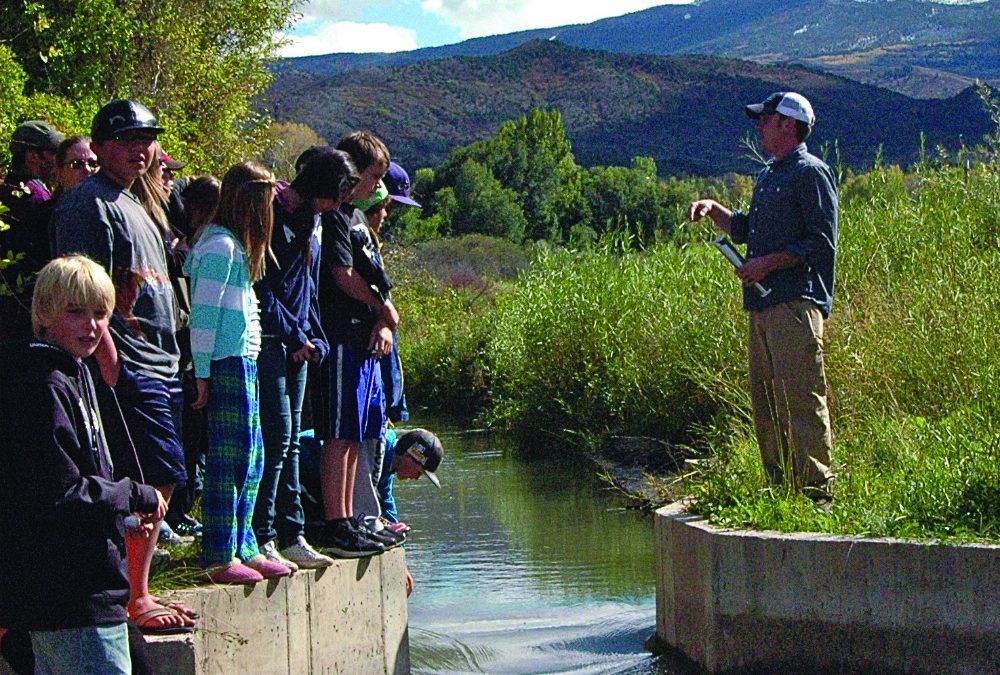“In the West, when you touch water, you touch everything,” former Colorado Rep. Wayne Aspinall once said.

In 2011, participants on CFWE’s annual river basin tour visited sites along the Colorado River. Photo By: Greg Poschman
“It’s an old quote, but it’s very, very true,” says Nicole Seltzer, executive director of the Colorado Foundation for Water Education. “You cannot talk about economic development, you cannot talk about agriculture, you cannot talk about industry, you cannot talk about land use planning, you cannot talk about anything—unless you factor in a clean water supply.”
But in today’s busy world, how do water educators in Colorado help people recognize the critical nature of water to their everyday lives?
Like its tagline, “speak fluent water,” CFWE aims to help people understand water well enough to participate in thoughtful discussions and act wisely when it comes to the resource. Even Seltzer says that’s a lofty goal, but one way to get at it is to hone in on the most receptive audience—those who are predisposed to caring about water. “You capture that and grow it,” Seltzer says.
Over the past few years, CFWE has focused on creating partnerships with like-minded organizations to reach their stakeholders, developed an interactive blog plus fact sheets on water basics, and increased its offering of one-day tours showcasing everything from climate science to energy development, which attract new people into the fold. “Then, we make sure we follow up with everyone who attends [our events] to provide additional ways to learn about water,” says Seltzer.
Many water educators find that gaining face time with audiences is a key to engaging them. “When I do presentations in person, it’s easier to gauge people’s responses,” says Hannah Holm, coordinator of the Water Center at Colorado Mesa University, which organizes research, education and dialogue on water issues in the upper Colorado River Basin. “In general, people seem to be interested in where their water comes from and what forces might affect it in the future, but it’s easier to tell when you can see their faces.”
Holm also considers people’s natural attraction to drama, such as ongoing water shortage, when giving presentations. “People get turned off by jargon and acronyms and the ins and outs of organizations they don’t know about,” she says. “I try to get to the main point about what’s going on and potential consequences for water and water users, with as little time on all the agencies and laws involved as possible.” By keeping presentations short, Holm saves time for responding to audience questions, allowing her to customize on the spot how she conveys priority takeaway information in terms that relate to her audience’s specific educational needs.
Providing real-world experiences can also make messaging more personal—and impactful. CFWE’s annual river basin tours are meant “to get people out in the field to see with their own eyes what’s going on,” says Seltzer. “There’s no better teacher than experience. It’s great to read about something, but then to take it to a more tactile experience is really important because it brings it home.”
Identifying and nurturing relationships with concerned citizens and leaders, as well as just listening to stakeholders, will help water educators find ways to enhance impact. Says Seltzer, “Our job is to create that dialogue with an engaged and interested audience, helping people learn enough that they feel compelled to participate and take ownership in some way.”—Janice Kurbjun


 Print
Print